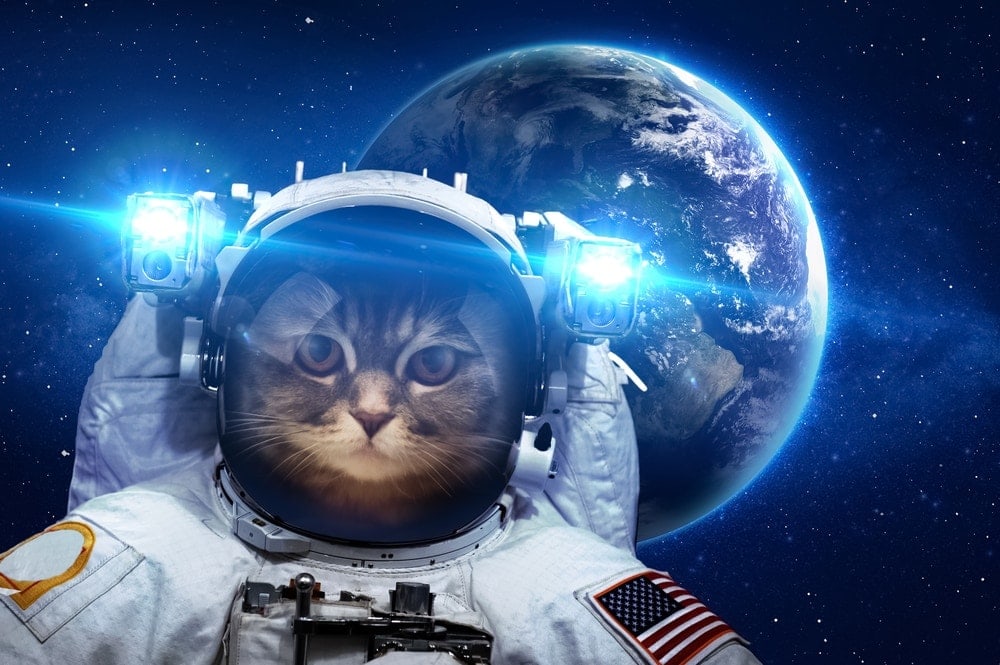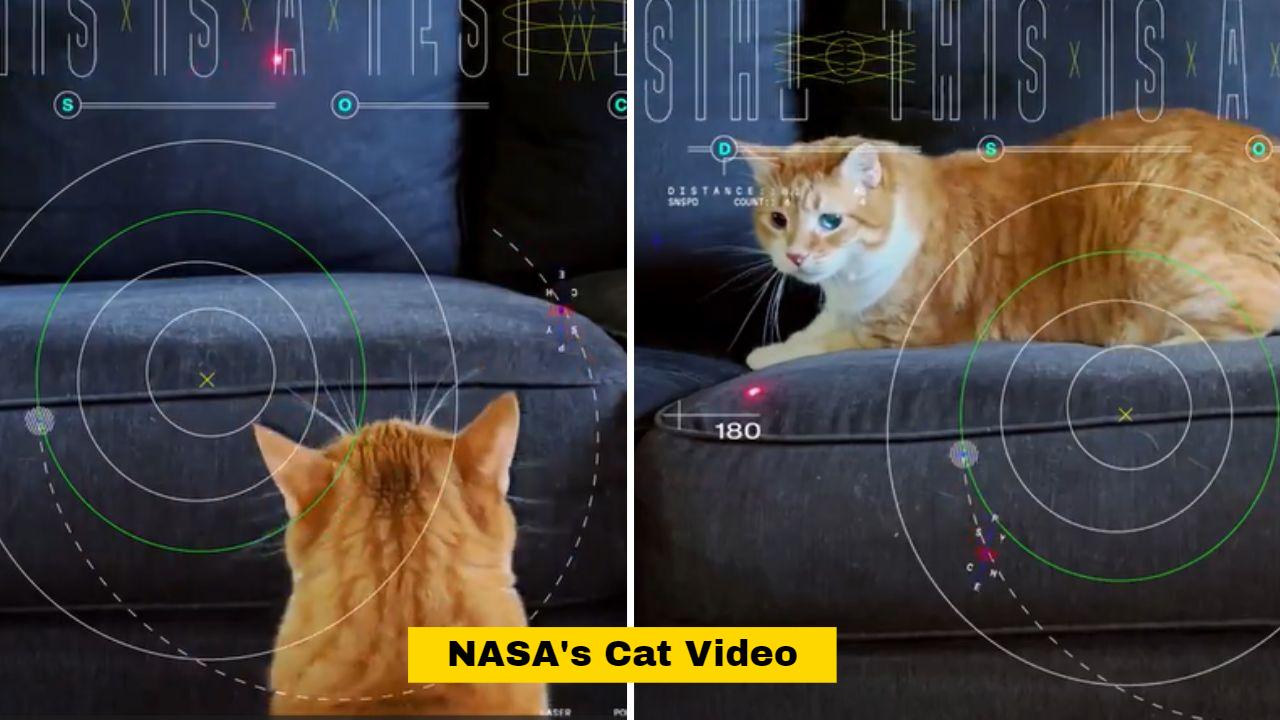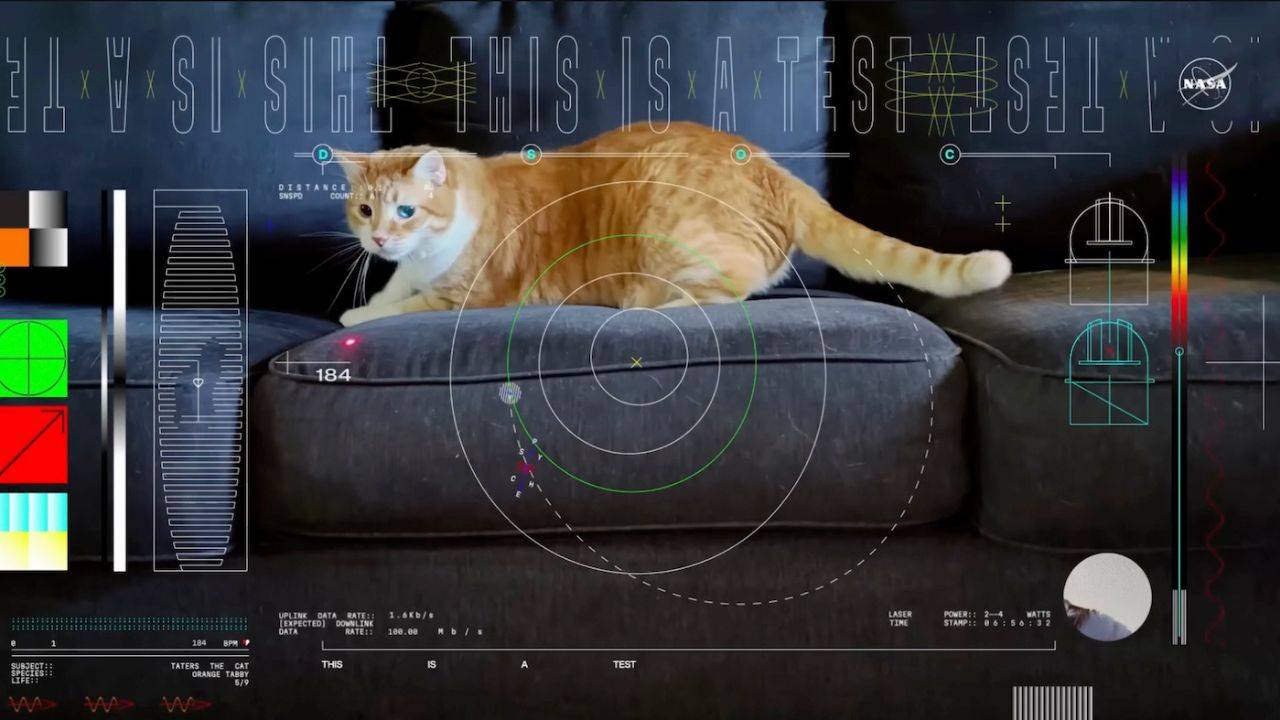NASA Unveils Video of Cat Pursuing Laser Light in Deep Space Communication Experiment, Covering a Remarkable Distance of 3.10 Crore Kilometres; Plans for Ongoing Trials Announced.
NASA has recently released a video of a cat chasing laser light, which shows the success of the laser internet system is skyrocketing. NASA showcases a high-definition video that traversed a staggering distance of 3.10 crore kilometres, taking 101 seconds to reach the agency’s California laboratory on Earth. In this video, we see a cat whose name is Taters. Taters shows the cat chasing a red-dot laser on a couch, giving the world the message that we can now send data anywhere by firing laser beams back and forth

NASA, having sent this video themselves, is strategically preserving it for future missions destined for Mars and beyond in space. This footage is a pivotal component of NASA’s ongoing trial and preparation efforts. That’s one small step for humans and one giant leap for cats. There are many successful people who start their careers by doing silly things, like the first video on YouTube called “Me at the Zoo.“.
How did NASA obtain this video?
The ‘Psyche’ mission spacecraft is additionally outfitted with both a computer camera and a laser transceiver. To obtain this video, NASA used three components in the experiment. In this setup, the initial transceiver embedded in the spacecraft comprises two components on Earth—a ground laser transmitter and a ground laser receiver. All three are part of a system NASA has named

DSOC (Deep Space Optical Communication)
First of all, the transmitter on the earth threw a laser beam towards the CYC aircraft. After this, the CYC intercepted this signal and relayed the previously uploaded video to the Earth’s receiver. NASA recorded the video through the receiver. Released, the laser transceiver transmits video to Earth in a time interval of 101 seconds.
Why Does NASA share the cat video?
NASA first posted this video on its X (formerly Twitter) account. NASA published the video on October 13, 2023, and despite its transmission on December 11, the footage was officially made available to the public on December 19. Meanwhile, NASA has made it clear that no cat has actually been sent up.
In an effort to showcase advancements in deep space optical communications, NASA has put the cat video on display. The cat belongs to a NASA employee, and this video was filmed on Earth. Later, this video was uploaded to the NASA Psyche spacecraft sent to space in October.
The spacecraft is on a trajectory towards a meteorite located between the Sun and Jupiter, carrying a payload of metallic materials. However, this is not the first time that NASA has sent such videos. Many times ,images and videos have been transmitted from space to Earth, and they are made public through the official channel of the space agency. NASA says that many more such videos will be tasted, sent, and also shown to all of you.
After uploading this video on social media, it has been liked by many people, and the development of NASA will be mentioned in the future. Here is the video to see and enjoy.
We just streamed the first ultra-HD video brought to you via laser from deep space. And it’s a video of Taters, a tabby cat.
This test will pave the way for high-data-rate communications in support of the next giant leap: sending humans to Mars. https://t.co/tf2hWxaHWO pic.twitter.com/c1FwybYsxA
— NASA (@NASA) December 19, 2023
What is important from this video?
The selection of the cat by NASA has a specific rationale, as it was initially inspired by the cartoon character Felix the Cat, as indicated on the space agency’s Jet Propulsion Laboratory (JPL) website.In earlier times, cats used to do very funny and beautiful things. The National Aeronautics and Space Administration employed the cat in space due to its ability to captivate widespread attention, drawing in a larger audience to witness its playful antics.

